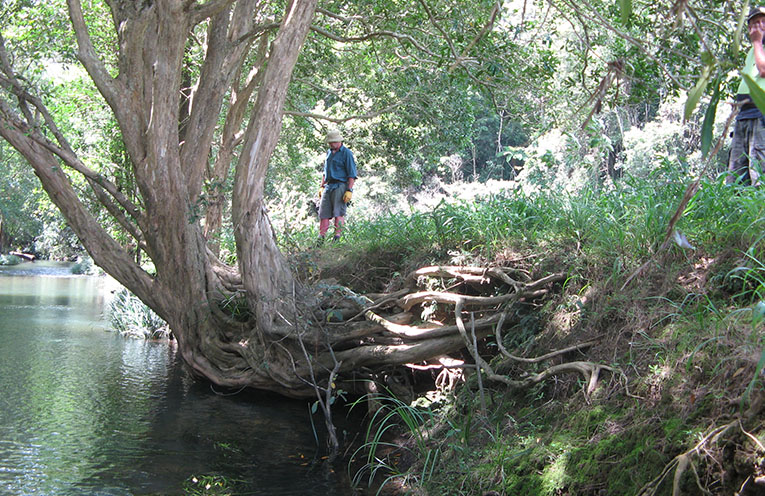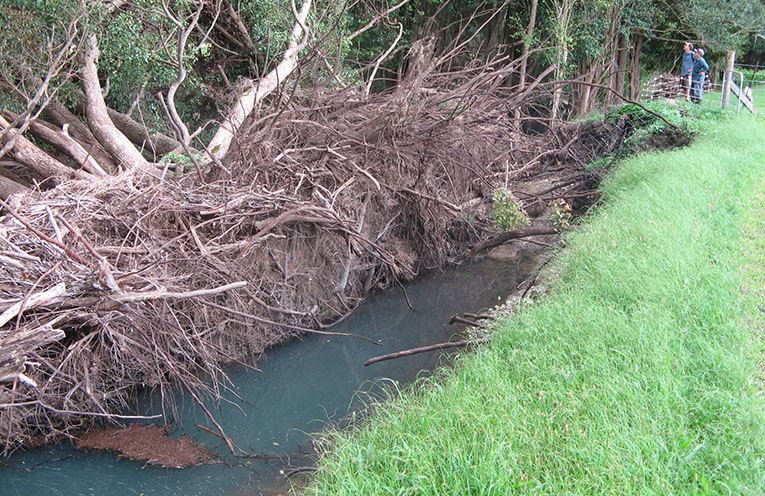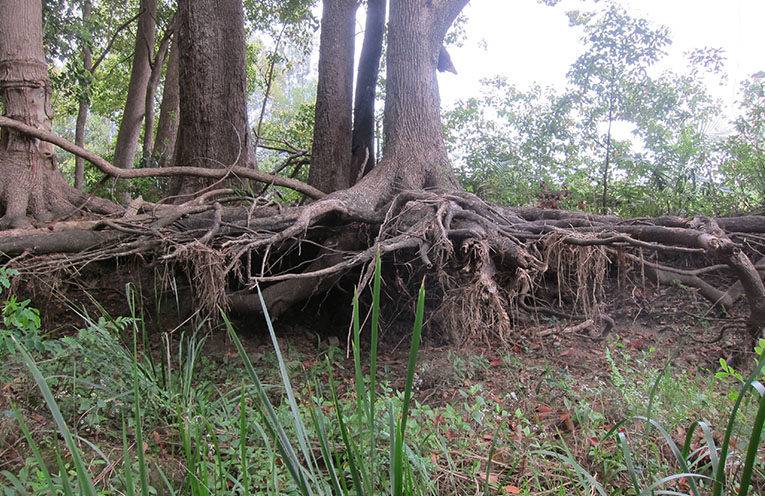
CONFLICTING messages on social media, about the care of the Orara River, is causing division amongst locals.
The Orara River Rehabilitation Project, started in 1997 as a result of community concern at the rapid decline in the health of the river, has been very successful in greatly improving the health of the river system.
 Advertise with News of The Area today.
Advertise with News of The Area today.It’s worth it for your business.
Message us.
Phone us – (02) 4981 8882.
Email us – media@newsofthearea.com.au
“Large numbers of clumps of camphor laurel trees were falling into the river and it had become impossible to paddle a canoe along the river,” said Ron Smith, a long-time volunteer with the Orara River Rehabilitation Project.
“There were many extensive bank erosion sites, and a large, tree-strangling, vine weed species called cats claw creeper had invaded large sections of the river.
“Large scale gravel extraction to feed the rapid development of Coffs Harbour added to stream bank erosion.”
The camphor laurel was introduced into the valley in 1901 when eight local primary schools were each gifted six camphor laurel trees by the Government, to plant as shade trees.
These trees thrived and by the end of the 20th century, they had grown big and bushy, leaning out over the water to get more light.
“As they are shallow-rooted, growing in soft soil, the wind’s force blowing on their large head topples them into the river, where they remain for years, causing log jams and collecting on bridges as consecutive floods move them downstream.
“Between 1997 and 2010 a large number of camphor laurel trees were poisoned using Roundup and trunk frill method.”
Over the last 25 years tens of thousands of local rainforest species have been planted along the river and creek banks and are now well established in many areas.
Just under fifty percent of the stream bank within the Coffs Harbour LGA has had some degree of restoration work carried out and just over half still requires rehabilitation, which is only carried out where landholders are willing to be part of the project.
Lloyd Foster from Coffs Harbour Bushland Regeneration Group who has been working the Orara River Committee since 1996 said, “Research since 2000 by Judy Davies on macroinvertebrates (waterbugs) showed that camphor laurel leaf litter is very poor habitat for waterbugs with camphor oil being slightly toxic to them, with only the most pollution-tolerant bugs inhabiting camphor-dominated areas.
“This then impacts the food chain, including platypus and Australian bass, which rely on waterbugs for food.”
By Andrea FERRARI


The Rivercare Project has had some great results.But behind the scenes many landowners are disgruntled with the poisoning of large camphors and the ramifications of the debris ,for possibly the next ten years.Many landowners have had personal experience of the project and regretted ever allowing poisoning the large camphors and leaving the dead trees standing. There are numerous problems with leaving the large dead camphors .No 1 is the massive OHS issues with falling limbs a constant problem ,it exposes the group to litigation .No 2 is the ridiculous amount of large wooden debris in the river from the poisoned camphors.This can cause increased log jambs and often river banks eroded because of the debris .
Funding needs to be targeted to sites where machinery can remove dead camphors after poisoning with haste .The debris either burnt or mulched.This would require stringent assessment and critical funding of potential sites and landowners .If an owner is keen and prepared to make a part contribution to the cost of heavy machinery etc .Nobody appreciates anything they get for free. ,it requires committed landowners who are prepared make a financial contribution and sign an enforceable revegetation agreement to use tax payers wisely and achieve a good result for the environment
The haphazard poisoning and debris issues of poisoned camphors needs to addressed.This would mean less properties would be funded ,but less is more .Targeted funding for machinery is required to remove dead camphors and a programmed revegetation plan .